Other Canadiens Season Preview Articles:
- Must-Watch Players at Training Camp
- Defense Pair Predictions
- 2021-22 Top Storylines
- 2021-22 Season Predictions
- Top Prospects to Watch at Rookie Camp
It’s the middle of August, and Montreal Canadiens general manager Marc Bergevin is nowhere to be found – he’s probably on vacation. The Canadiens news is minimal, so what else can we talk about or debate? Line combinations, of course! The Canadiens have really concentrated on winger depth this offseason, but have done nothing about the lack of experience at the center position. Let’s have a look at what the potential line combinations could be going into next season, should the team remain relatively unchanged.
Who’s In and Who’s Out
There were some big changes this offseason. Many new faces were brought in, but a lot of familiar faces were signed elsewhere. The Canadiens also had a major loss due to injuries.
Who’s Out:
Phil Danault, C; signed with the Los Angeles Kings
Tomas Tatar, LW; signed with the New Jersey Devils
Corey Perry, RW; signed with the Tampa Bay Lightning
Jon Merrill, D; signed with Minnesota Wild
Cale Fleury, D; selected by Seattle Kracken in the expansion draft
Shea Weber, D; out for the season due to multiple injuries
Micheal Frolik RW, Eric Staal, C, Erik Gustafsson, D; not re-signed
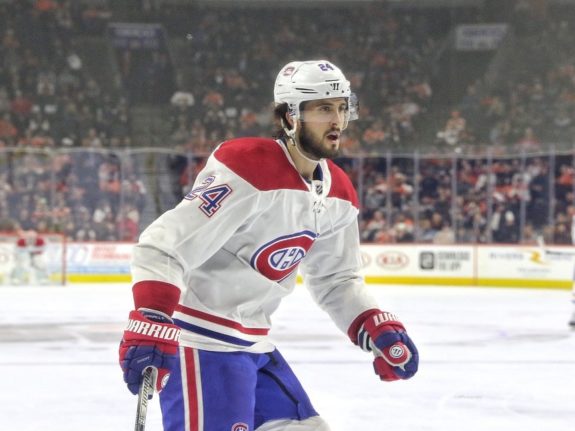
Danault and Weber are huge losses for the team, and will be hard to replace. Danault was one of the league’s best shutdown forwards, and a key reason the Canadiens reached the Stanley Cup Final. Weber’s leadership will be the biggest loss to the Canadiens. His production waned the last couple of seasons due to injuries, but his physical presence on the ice was a major factor for the success of the Canadiens.
Who’s In:
Mike Hoffman, LW; Free agent (FA), signed a three-year contract
Cedric Paquette, C/LW; FA, signed a one-year contract
David Savard, D; FA, signed a four-year contract
Mathieu Perreault, LW/RW; FA, signed a one-year contract
Chris Wideman, D; FA, signed a one-year contract.
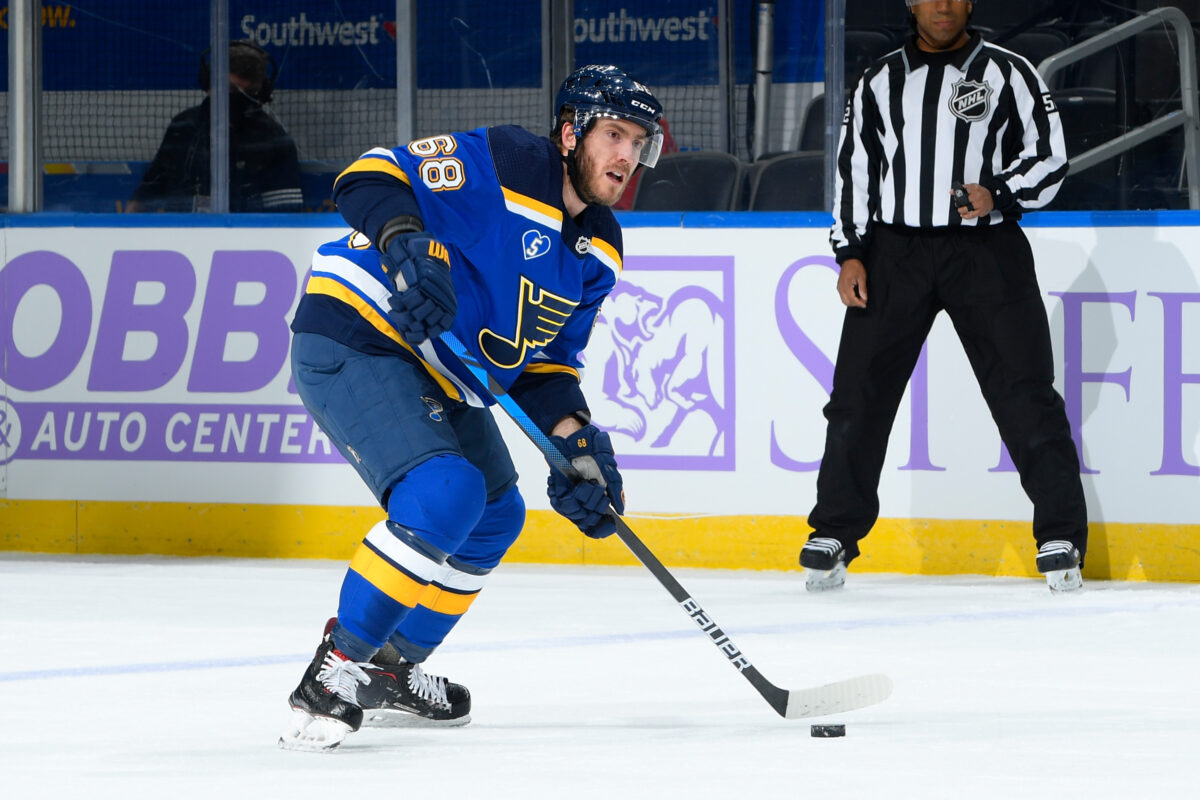
The biggest signing was Hoffman, who brings the Canadiens much-needed help on the power play (PP) while also being another pure goal scorer who can complement any line offensively. Savard was signed to replace Weber’s defence; he will never have the offensive numbers of Weber, but with the way Weber was playing last season, the offence wasn’t really there five-on-five anyway. The rest are depth signings that could help fill out the bottom six lines or bottom pairing on defence.
Now that we know who is in and who is out, let’s get into what the lineup could look like next season.
Line One
This will be the top offensive line for the Canadiens but probably not the one that will match up against other teams’ top lines – well, at least not yet. This line will consist of:
Nick Suzuki, C: he proved last season that he could play the minutes and be an offensive threat for the Canadiens, scoring 41 points in 56 games while playing just over 18 minutes of ice time. The 41 points tied his rookie totals, and he was scoring at a 60 point pace over 82 games; Suzuki should have another big season centering the top line. He will need to work on his faceoffs, but his defensive game is starting to come along to the point where he can be trusted against top lines.
Cole Caufield, RW: Caufield came in late last season, and after a few games getting his feet wet he took off, scoring five points in his last seven games of the regular season, totaling four goals and five points in 10 games. After missing the first two games of the opening round of the playoffs, he scored 12 points in 20 games including four goals. Caufield is one of the highest-rated prospects coming into this season, and is poised to be a contender for the Calder Trophy as the league’s top rookie. His pure scoring ability will compliment Suzuki’s passing nicely, and both he and Suzuki should give the Canadiens a nice scoring punch.
Jonathan Drouin, LW: Now, I know what a lot of you might say “Drouin shouldn’t be on the first line,” and I could agree with you. I honestly wouldn’t be surprised if he starts on the third line. I put Drouin here because he has great chemistry with Suzuki, and his setup capabilities would be a perfect match for Caufield, who also has great chemistry with Suzuki. Now, if these three guys were to click – and this is a big if – this could be a dominant offensive line for the Canadiens. Say what you want about Drouin, but he has great skill and playmaking abilities; if he is over whatever it was that kept him away from the team, he could come back stronger and be the Drouin we hoped we traded for.
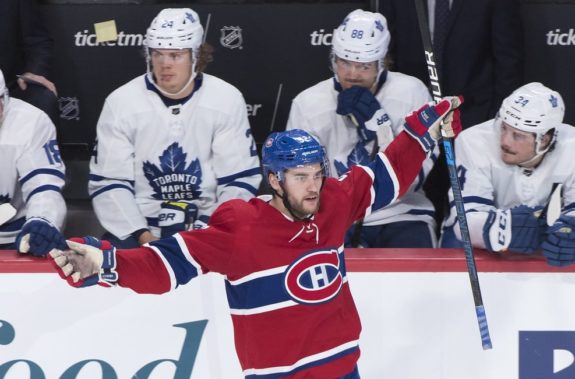
The biggest issue with this line is that Suzuki will have to do all the grunt work to open the ice for Caufield and Drouin. This could take away from his offensive abilities; Suzuki will be the main defensive player on the line as well; although Caufield isn’t a bad defender, his size makes it hard for him, and we all know about Drouin and his defensive play.
Line Two
The second line will be another line to provide scoring, unlike last season when this line was the Canadiens’ shutdown line and featured Danault. This season it looks like the team will go back to the old, traditional makeup of the top two scoring lines and the bottom two being more defensive.
Jesperi Kotkaniemi, C: This should be the season that Kotkaniemi finally breaks out. He should have no issue becoming the number two center, and with solid wingers and more consistent linemates, he should be able to have a productive season. Kotkaniemi is that rare player that everyone is rooting for and expecting to fail at the same time. In his rookie season in 2018-19, he scored 34 points, but injuries and inconsistency saw him flounder the following season. He had a modest 20 points in 56 games last season, then only 8 points in 19 playoff games, including 5 goals. We also must remember he just turned 21 in July.
Josh Anderson, RW: Anderson came to the Canadiens last season to provide a big solid forward to score goals. He did just that, scoring 17 goals in 52 games, a pace that would be 27 in an 82-game schedule. Anderson is not only big, but also fast, and can use his size with his speed to create scoring chances and goals. He will also open up space in the offensive zone for his linemates, giving them more room for scoring chances. He isn’t the greatest passer, but he could definitely have a productive season with goals with a good setup-man. Still, don’t expect to see him get tons of points overall.
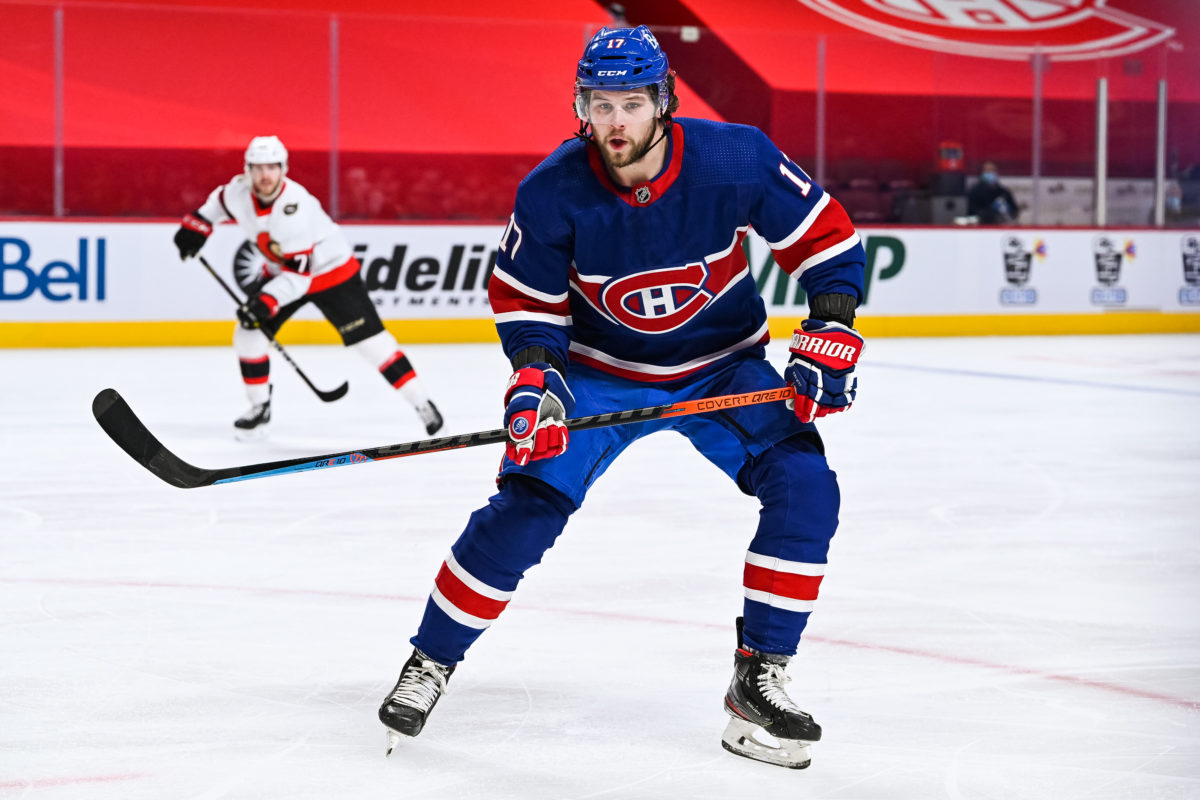
Mike Hoffman, LW: Hoffman was brought in to help the Canadiens’ lacklustre power play from last season, and he will do just that. What he will also bring is solid goal scoring; Hoffman, like Caufield, is a pure goal scorer who can fill the net. His lowest goal total in a full season was in 2017-18 when he scored 22 – in his career, he averages 28 goals a season over 82 games. Hoffman won’t bring solid defence, so it will be up to Kotkaniemi and Anderson to do that.

This line will be strictly an offensive line, but should provide the team with many goals. This will also give Kotkaniemi the perfect opportunity to succeed and prove he is exactly what the Canadiens drafted him for. The defence will be the line’s biggest issue, but two-thirds of the line is pretty solid defensively, so they should be okay in that department as well.
Line Three
This line will be more of a two-way line than anything; it will provide good offence and solid defence, but it’s inexperienced at the center position. If the center can elevate his game, this could be an astounding line. This will also be the line I will probably get the most flack for, as well.
Ryan Poehling, C: Poehling had a rough start to his pro career, as he was first cut from the Canadiens’ training camp, and then sent to the Laval Rocket. He had a rough season there, scoring only 13 points in 36 games, and not showcasing his talent when the Canadiens called him up, scoring only two points in 27 games. Last season, however, he spent the entire year in Laval, and had 25 points in 28 games, before ending the season with a wrist injury. If his wrist is fully healed and he can carry his game over from Laval, he should fit in nicely on the third line, similar to what the Canadiens did with Kotkaniemi when he first started.
Brendan Gallagher, RW: Gallagher is the heart and soul of the Canadiens and, if the team decides, he should be the temporary captain for next season. Gallagher is a tough-as-nails, play-hard type of guy who has a knack for getting the garbage goals. His knack is so good, in fact, that he has scored 30 goals twice in his career. However, with his style of play comes injuries. He missed time last season with a broken hand, and was injured through the playoffs. Playing him on the third line will allow the team to monitor his minutes and stay healthier through the season.
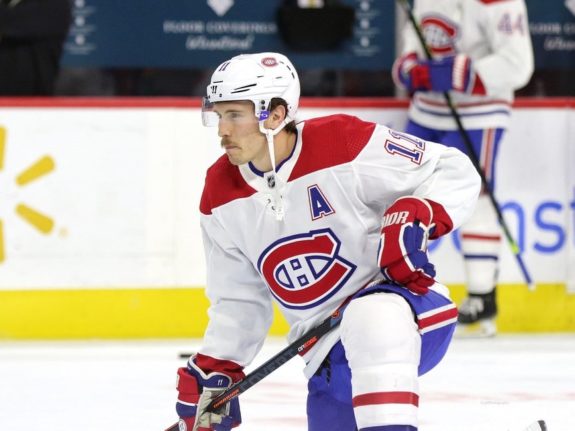
Tyler Toffoli, LW/RW: Toffoli was an amazing signing by the Canadiens in the previous offseason. He came over with no expectations of being the team’s leading scorer, but after a scorching start to the season and consistent play throughout, that’s exactly what he became. He scored 28 goals and 44 points to lead the team in both categories, so why have him on the third line, you ask? Toffoli’s career-high in goals is 31 and points is 58, and both happened in 2015-16; it would be in bad faith to think he would score on a 40 goal pace like he did last season, where he is more likely to score between 20-25 goals. Having said that, this doesn’t mean he and Drouin couldn’t easily switch spots and Toffoli play on the top line.
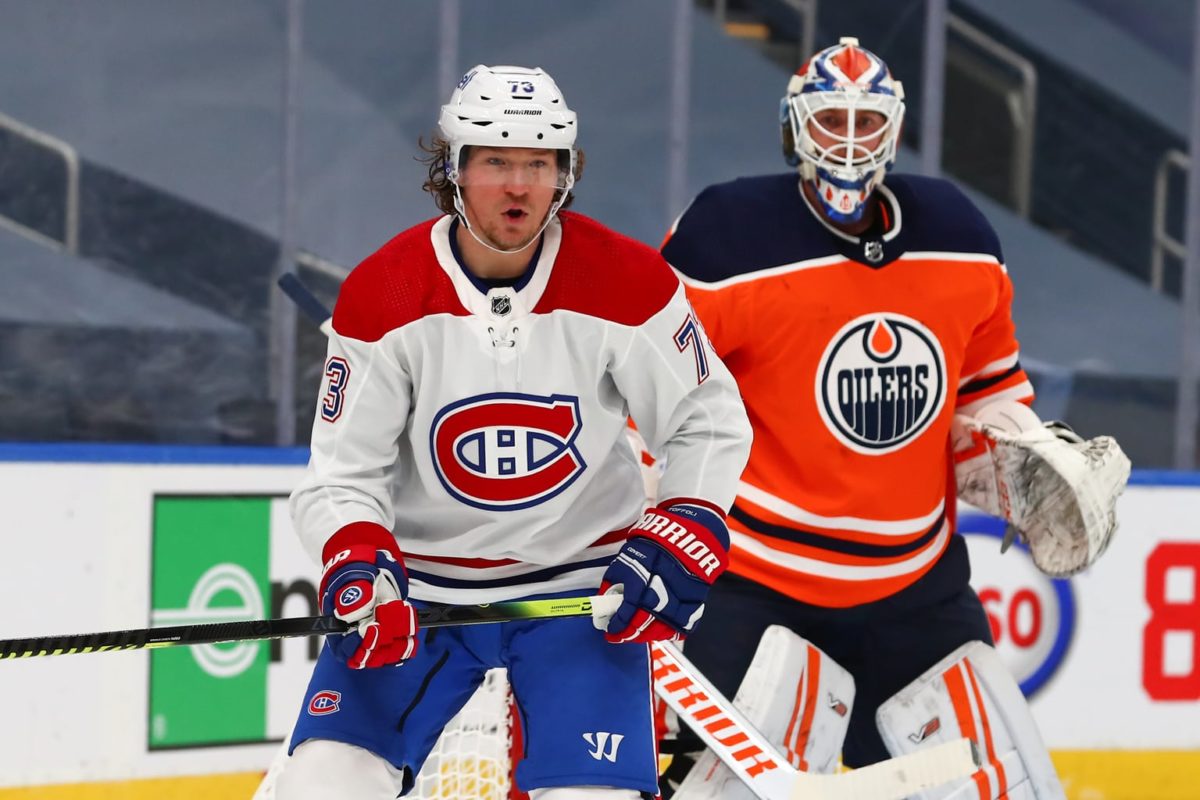
This line will be excellent defensively: Gallagher and Toffoli will shelter Poehling and give him the room to grow his game, protecting him when he makes defensive mistakes. The success of this line will depend on whether or not Poehling can complement his wingers and play at their pace in the NHL.
Line Four
This line will mainly be a defensive type line that will fill for the other lines when needed. The good thing about this line is it has players that can play up and down the lineup and provide the team with good depth.
Jake Evans, C: Evans came into his own this season with the Canadiens, and he provides speed and excellent defence from the center position. He won’t replace Danault, but he made great strides in his game and used a good work ethic to ensure he plays a solid game. He has some offensive skill in him but will mainly be used in a defensive role.
Joel Armia, RW: Armia is a big, solid winger who was one of the main reasons the Canadiens’ penalty kill was so good in the playoffs. Armia provides excellent defence from the forward section, and is a good power forward when healthy. Armia has had some health issues since arriving in Montreal, and hasn’t had a chance to play a full season since 2019-20. He had 16 goals and 30 points in only 58 games. When in top form, Armia could provide the Canadiens with another 20 goal scorer. If he can score 20 goals on the fourth line, the team will have an offensive threat on every line.
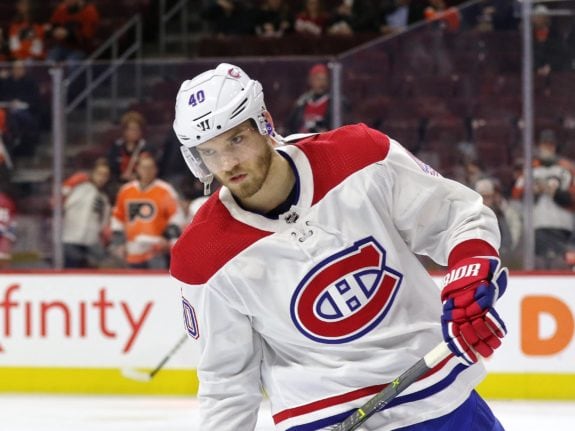
Artturi Lehkonen, LW: Lehkonen has all the makings of a good two-way forward, the problem is he has a hard time being consistent in the offensive zone. He has a great shot, but way too often misses the net with it; where his talents really lie is in his defensive play. He can play an excellent defensive role and help this fourth line become a solid shutdown line if need be. If he can hit the net more often, he will give the Canadiens’ fourth line a good one-two combo with Armia.
Extras
The Canadiens will likely carry two extra forwards in the roster to have a total of 14, and the two extra will be important to add to the depth and be able to come on after days, or weeks, of not playing and fill in where needed.
Cedric Paquette, LW/C: Paquette was acquired by the Canadiens to provide center depth and possibly give the team a veteran who can win draws. Paquette, however, is not a full center and can’t really be relied upon to be an everyday center. He will provide good quality depth and fill in on the bottom six at either wing or center.
Mathieu Perreault, LW/RW: Perreault will play mostly a depth role and fill on the wings where needed. Perrault is a hard worker with good speed and will fill in the bottom six when a winger is needed. He also has some experience at the center position but hasn’t played there regularly since he was with the Anaheim Ducks in 2013-14, on top of not taking over 100 faceoffs since 2016-17.
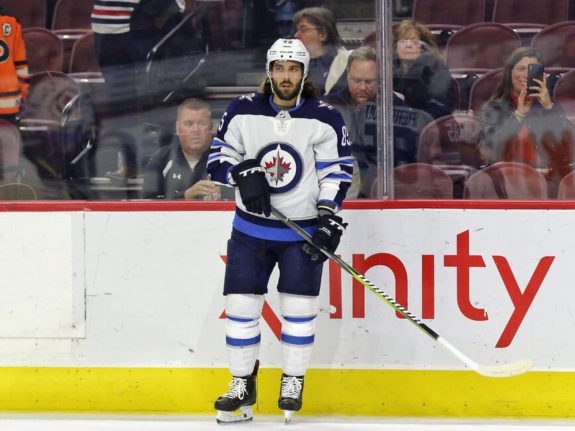
It’s possible that Paquette starts as the fourth-line center, but with Evans’s strong play last season, it will be his spot to lose. It’s not likely Perreault will get regular ice time unless an injury occurs.
This is how I think the lineups will at least start next season. I will concede, though, that Drouin and Toffoli will probably switch spots and Gallagher and Anderson will as well; other than that, I believe these will be the lineups to begin the season. I expect maybe a move or two before the start of the season, so this could change when that happens.
Recap:
Drouin/Toffoli – Suzuki – Caufield
Hoffman – Kotkaniemi – Anderson/Gallagher
Toffoli/Drouin – Poehling – Gallagher/Anderson
Lehkonen – Evans – Armia
Paquette – Perreault
Let me know what you think or what your line combos will be.
